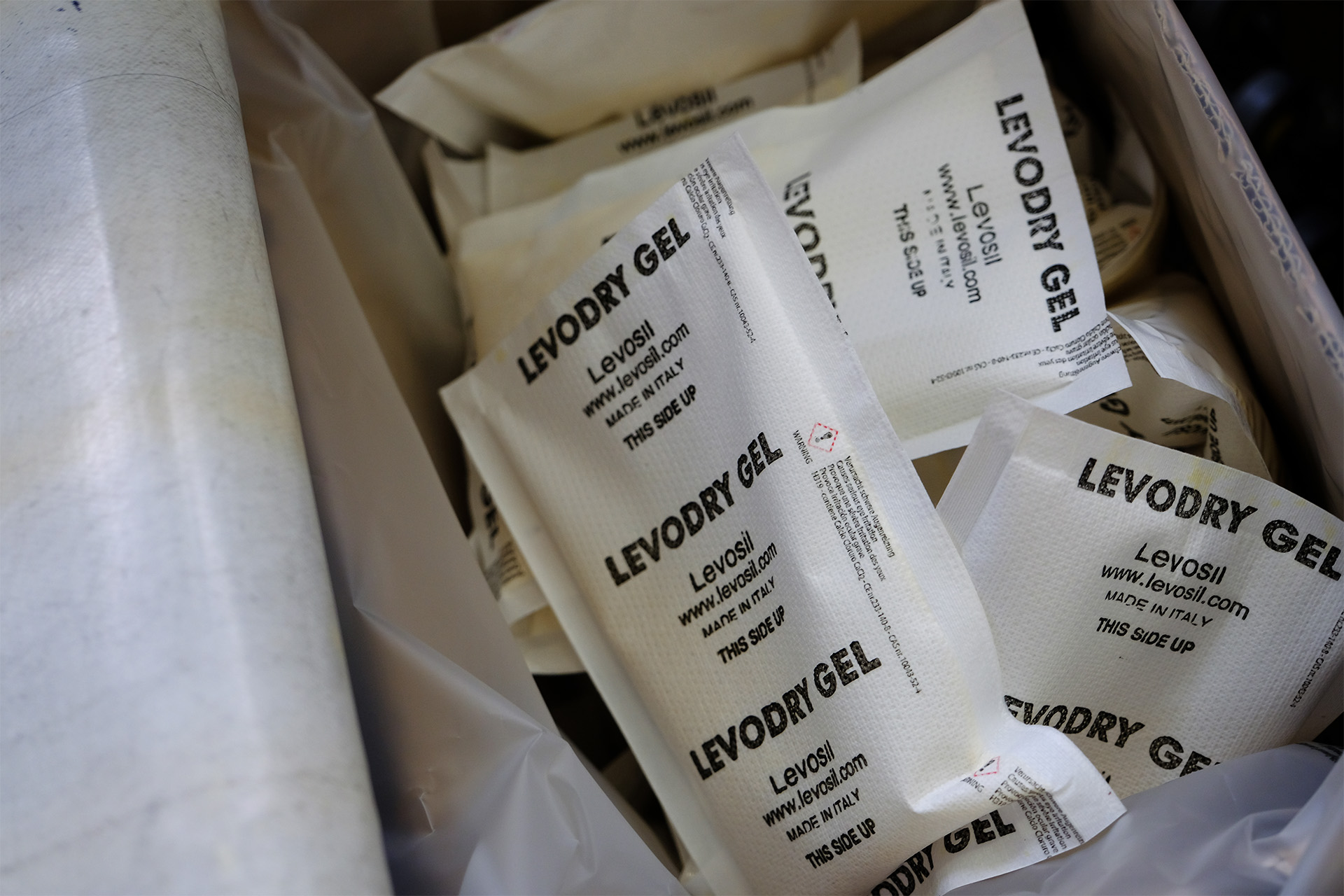The Company
Levosil, an Italian pioneering company in the field of Protective Packaging, started its operations back in 1964. For more than half a century, Levosil is maintaining active production of desiccant bags and humidity indicators in Italy.
Quality System
Quality Certifications:
- UNI EN ISO 9001:2015 (since 1999)
- ISO 15378:2017 (Since 2010)
- DIN 55473 (Since 1996)
- FSC (since 2018)
Research and Development
Levosil cooperates with its customers continuously exchanging knowledge to refine products and enhance the clients’ packaging safety and efficiency.
Applications
One specific product for each application.
Pharmaceutical and Food
Container Protection
Industry
Consumer Goods
Electronics
Our Products
* Calculate how many desiccants to use in your packaging according to DIN 55474
Raw Materials
Each application needs to be treated with the correct desiccant; choosing the right one for your application is crucial. Levosil is committed to providing full support to customers to ensure the optimal selection of desiccants.



































